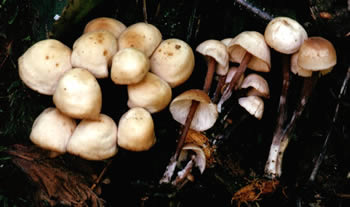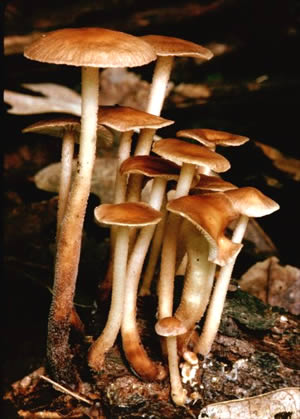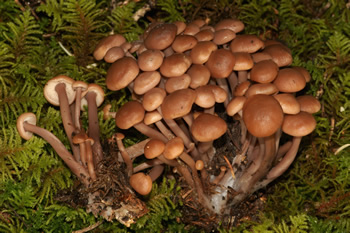Connopus acervatus
Scientific name: Connopus acervatus (Fr.) K. W. Hughes,
Mather & R. H. Petersen
Derivation of name: Acerv- means a "heap" perhaps in reference
to the dense clusters this fungus forms on wood.
Synonyms: Gymnopus
acervatus (Fr.) Murrill;
Collybia acervata (Fr.) P. Kumm.
Common name(s): Clustered Collybia.
Phylum: Basidiomycota
Order: Agaricales
Family: Marasmiaceae
Occurrence on wood substrate: Saprobic; forming dense clusters
on
decaying coniferous logs and branches or from buried wood;
July through October.
Dimensions: Caps 2-5 cm wide; stipes 3-10 cm long and 2-6 mm
thick.
Cap: Smooth; dry to moist; reddish-brown at first, fading to pale
grayish tan.
Gills: Attached or nearly free; whitish with a pinkish tinge.
Spore print: White.
Stipe: Dry; smooth; reddish-brown with dense white mycelium at
the base.
Veil: Absent.
Edibility: Unknown.
Comments: Now that Collybia is Gymnopus, should we give this
the common name Clustered Gymnopus? Or, perhaps we should
just learn the scientific name.
More information at MushroomExpert.com

Figure 1. A faded cluster of Gymnopus acervatus.
Photo © Steve Nelsen.

Figure 2. A cluster with a little more color in the
caps. Photo © Steve Nelsen.

Figure 3. A dense cluster. Photo © John Plischke III.